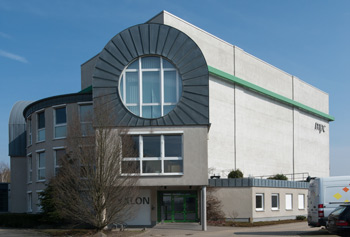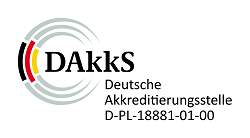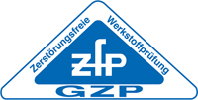In nondestructive testing X-ray sources (X-ray tubes and accelerators) are used as well as gamma sources (Co60, Ir192, Se75 and so on).
In order to produce X-rays, electrons have to be accelerated in an evacuated chamber. When they decelerate by striking against the target, X-rays are generated.The radiation energy of X-ray systems can be adjusted according to the material and wall thickness of the test object up to a system specific maximum. On one hand, the exposure times of x-ray systems are usually much shorter than those for gamma sources because of their high dose rates. On the other hand, the setup and positioning of the x-ray sources is more time consuming because of their size and cables.
Gamma devices are built on a simple principle. In rest position a radioactive preparation is in a shielding container (gamma device). The preparation holder must be connected with a bowden wire. After opening the container, the source can be moved with the bowden wire (remote control) through a pipe or hose to the working position. When the exposure time is elapsed the preparation will be pulled back to the gamma device and the container will be shut. This simple mechanical functionality keeps these systems inured and independent of electricity. Therefore, they are well suited for construction site use. One disadvantage is that the radiation energy is only depending on the isotope and cannot be adjusted to the testing task in an optimal way. In many cases a lower image quality must be expected. Moreover, the constantly decreasing activity must be compensated by longer exposure times until the preparation must be exchanged.
Accelerators bring electrons to high speeds in a circular pipe (betatron) or in a linear pipe (linear accelerator), in order to generate X-rays when the electrons are decelerated by a target. These systems achieve energies many times higher than those of classical X-ray tubes and are typically between 1 and 30 MeV in nondestructive testing.
The energy of accelerators cannot be adjusted continuously. There are systems with only one constant energy, and others that provide a few energy levels (e.g. 6 MeV, 9 MeV and 12 MeV). Due to the system design, the radiation is pulsed, which causes a high effort for synchronization when digital detectors are used.
The high dose rate and the high ability to penetrate matter requires an enormous effort for radiation safety measures. Radiation shielded rooms with walls of concrete with thicknesses between two and three meters become necessary. The radiation sources are usually positioned by special crane systems (manipulators).
Accelerators are typically used for wall thicknesses, that cannot be penetrated by X-ray systems or gamma sources sufficiently or only with uneconomical exposure times. Our 9 MeV linear accelerator is mainly used for steel walls between 50 mm and 400mm in thickness.







